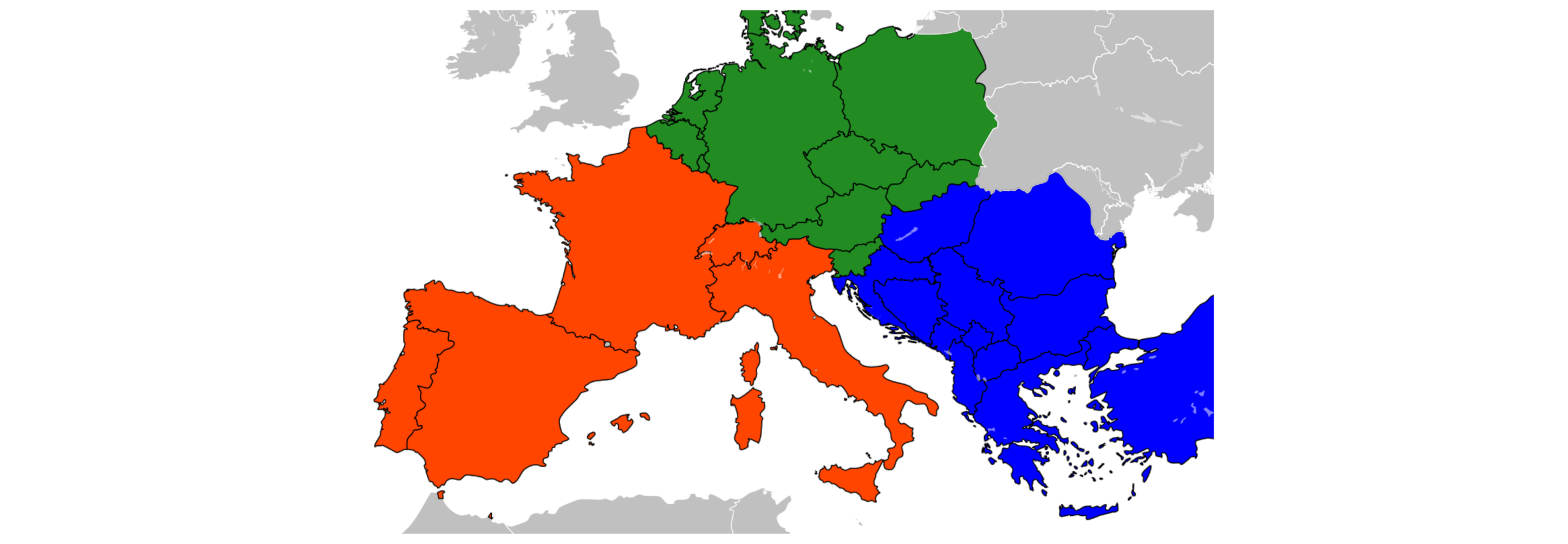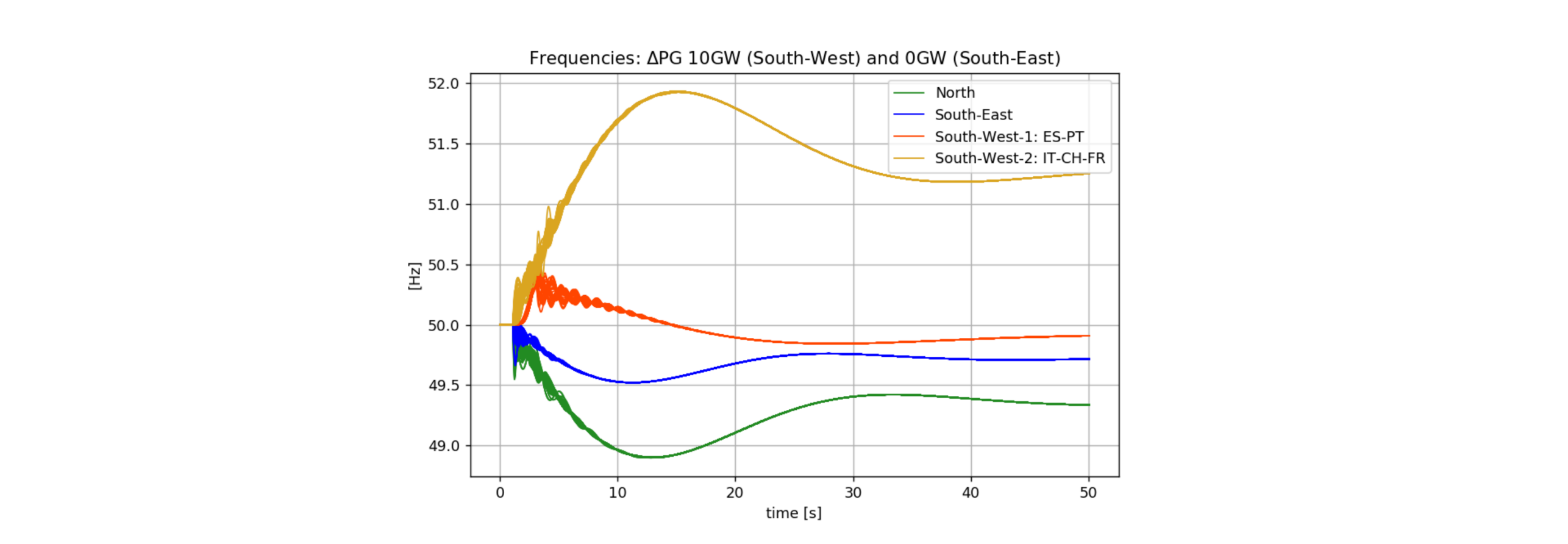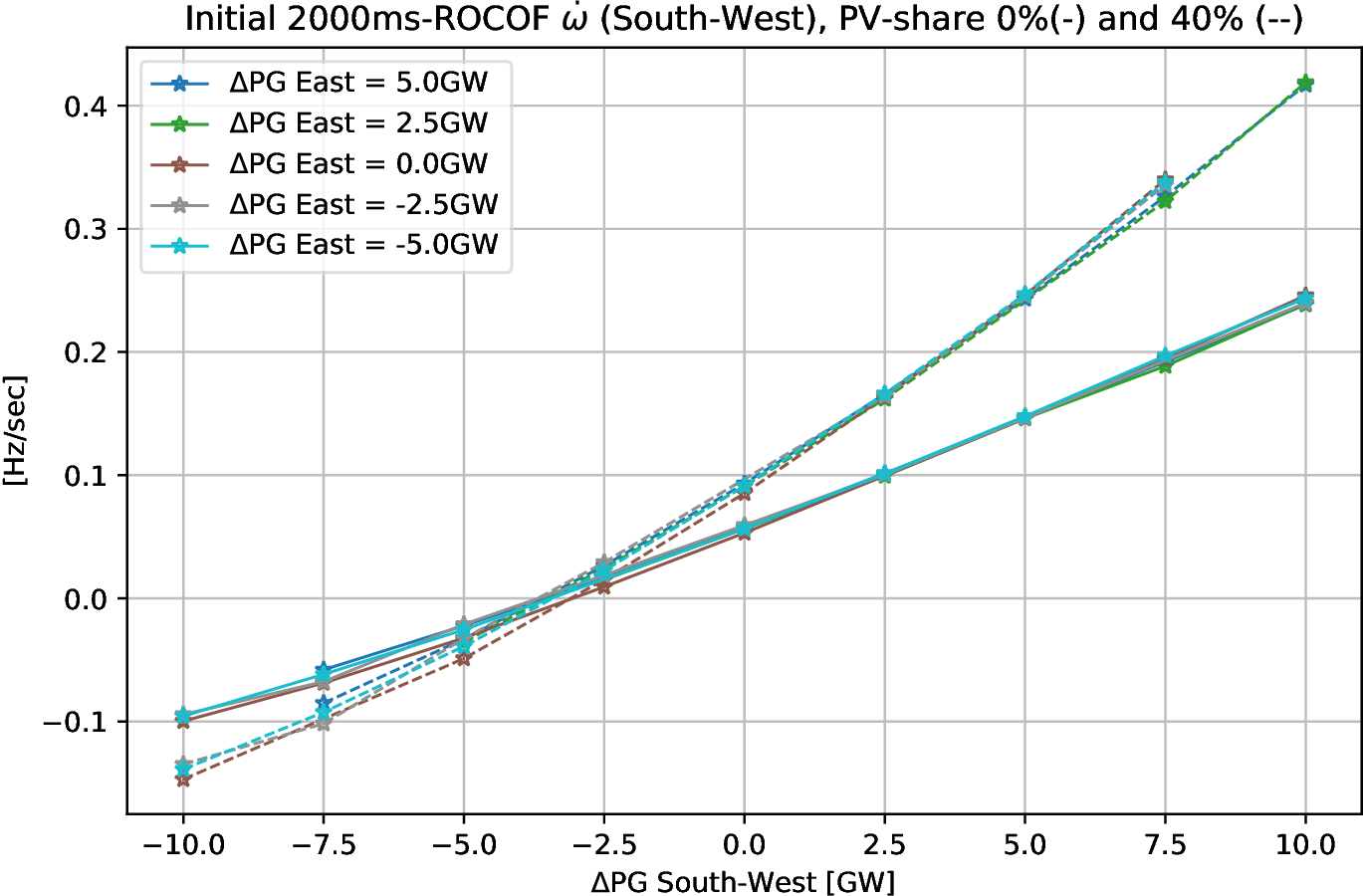SCCER-FURIES Dynamics
After an initial review of the literature and testing the dynamic ENTSO-E model characteristics, different scenarios of investigation were selected, including:
- Share of converter-based renewables. The more synchronous machines are replaced, the more fragile the ENTSO-E system becomes during transients.
- Variation of the initial load flow distribution between the areas of the system split. The higher the power exchange before the split, the larger the disturbance impact becomes.
- Converter control approaches of the renewables (with and without grid support)
- Continental ENTSO-E dynamic model with initial load and generation conditions and different split scenarios. The focus is a reproduction of the 2006 system split, but also the identification and simulation of consecutive split scenarios during transients.
The objectives were as follows:
- Modification and simulation of the dynamic ENTSO-E model
- Investigate the sensitivities w.r.t. the different scenarios (e.g. share of renewables, load flow exchange between areas)
- Definition and computation of stability metrics for different disturbance scenarios
- Quantitative assessment and definition/computation of a stability indicator for potential disturbances (e.g. used by the TSOs)
- Dynamic power system stability
- Critical large-scale disturbances of the future ENTSO-E system (system split, partial black-out)
- Challenges from reduced inertia in the system during transients
- Potential of dynamic support from converter-based generation
Dynamic power system stability is a growing concern for large transmission grids, due to challenges from reduced inertia as converter-based generation replaces traditional synchronous machines. Depending on the time of day and the load flow situation, the continental ENTSO-E transmission already faces several dynamic challenges, ranging from inter-area oscillations, temporary frequency violations, to system splits into multiple synchronous areas. Investigations in previous projects, simulations of the full ENTSO-E dynamic model and work by the project partner ZHAW showed that the system is quite robust to small disturbances. Individual outages of generators, lines or loads may trigger some inter-area oscillations but are currently not seen as critical scenarios endangering the security of the system. This may change in a future with an increased share of renewable generation and less system inertia. However, a more crucial and present system scenario is the risk of a system split caused by a cascade of line outages in a system with large power transmission between different areas. Technical meetings with the project partner Swissgrid have confirmed this assumptions.
Consequently, a detailed investigation of the ENTSO-E system split was selected as a focus of the dynamic stability investigation at ETHZ-FEN.

- Implementation of the ENTSO-E dynamic model in a modular simulation framework combining symbolic and numerical methods. Runs approximately realtime for large continental ENTSO-E dynamic model (about 10’000 buses and 1’000 generators). [Tool: in-house FlexDYN with Python based interface]
- Implementation of various converter models (impedance, current-controlled capacitor, Virtual synchronous machine)
- Development of a two-step initialization approach to simulate different inter-area power exchanges (important for feasible Voltage/reactive power setpoints): 1. Solve OPF problem (with bounds on PG,QG,VG), 2. Solve dynamic initialization problem (with bounds on AVR,Turbine,Generator)
- Simulations of the ENTSO-E system split and identification of cascading splits (Figure 1).
- Post-processing of simulation results, computation of performance metrics (ROCOF, Nadir, relative deviation, ...) , visualization as parametric stability indicator (Figure 2)


Partners: ETHZ (FEN), ZHAW (IEFE), Swissgrid AG
Duration: 01/2017 - 12/2020
Funding: Innosuisse, Swissgrid
Project Team: Dr. Alexander Fuchs, Dr. Turhan Demiray
external page Prof. Petr Korba at ZHAW and Dr. Walter Sattinger at Swissgrid